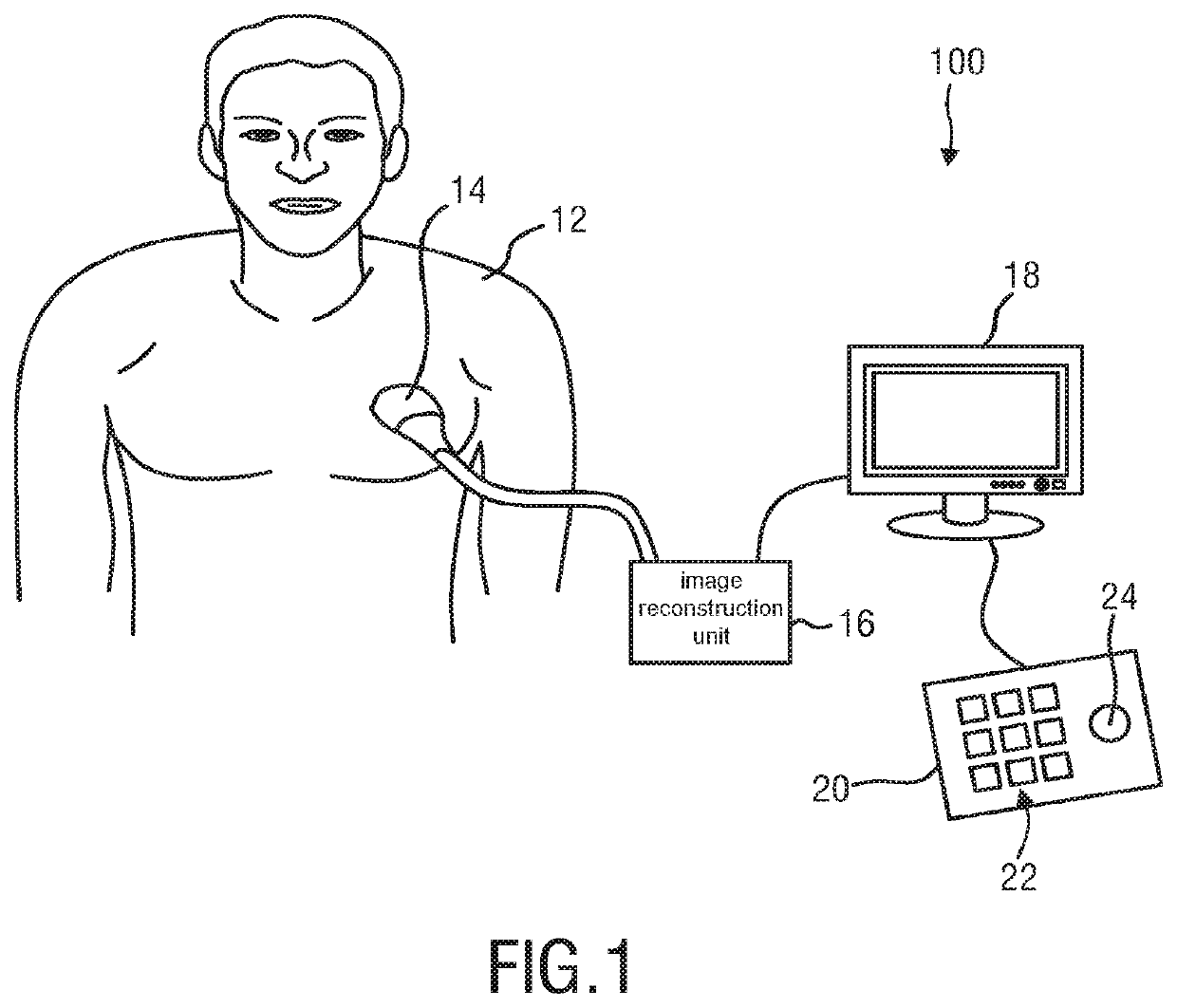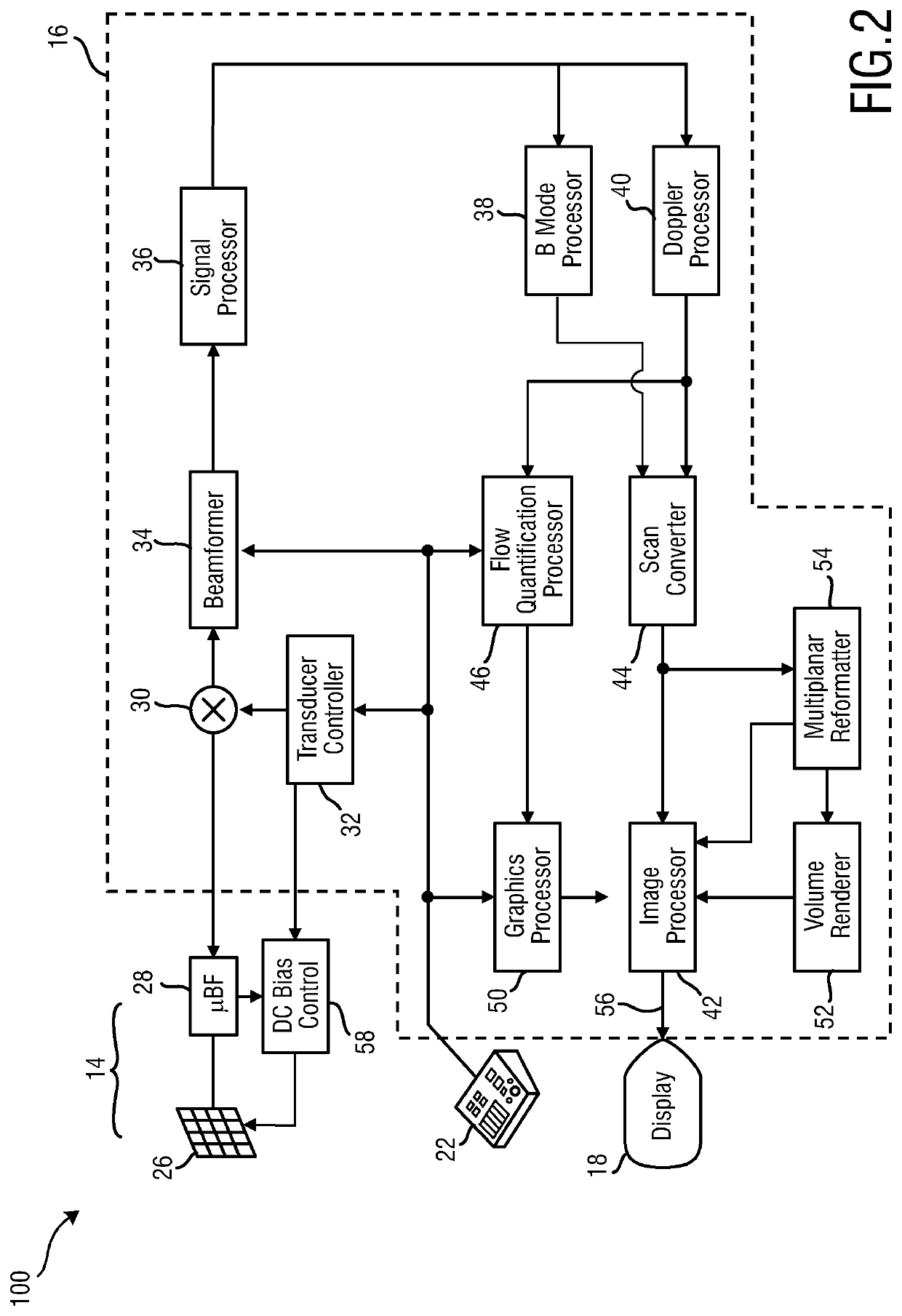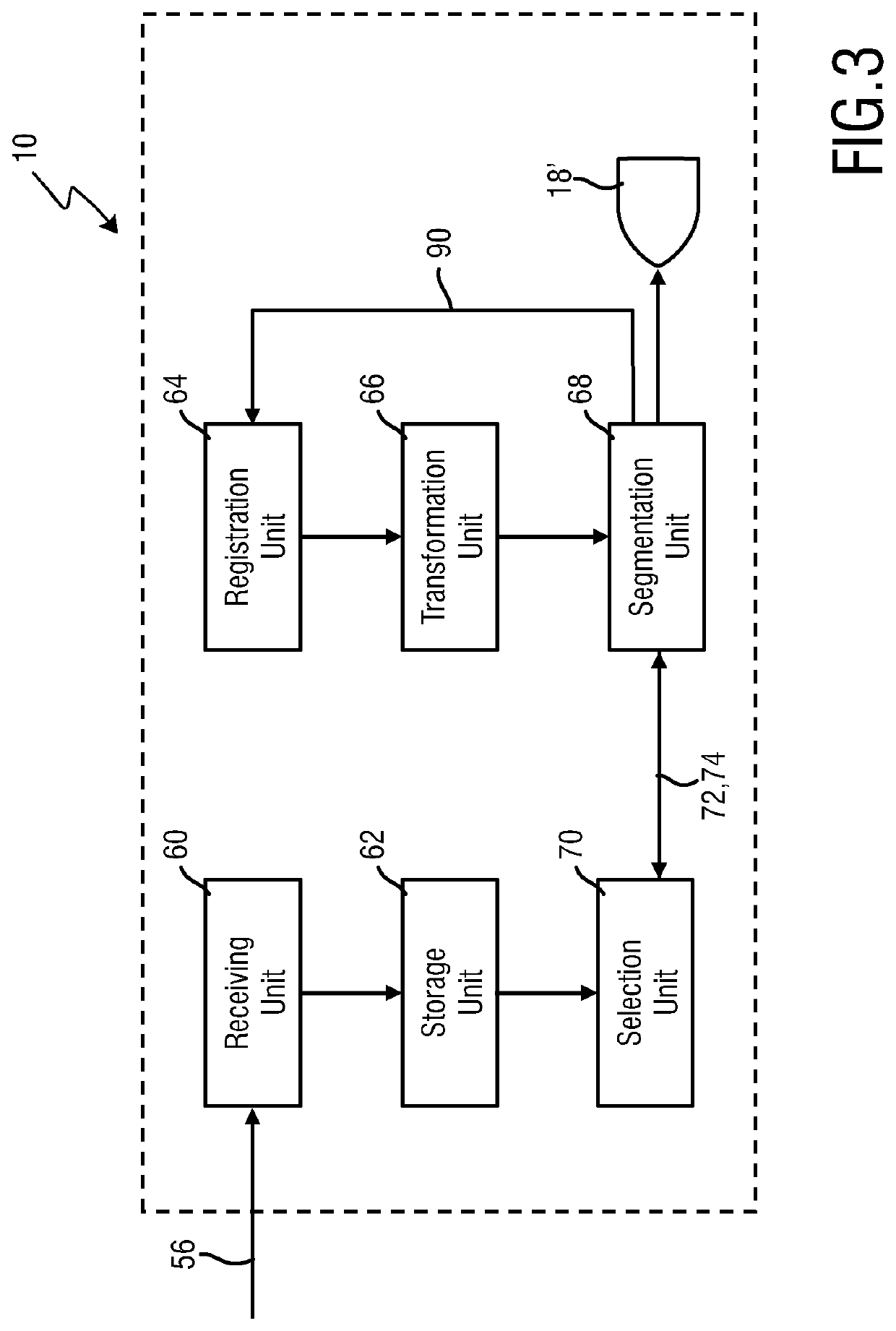Medical image processing device and method
a medical image and processing device technology, applied in image enhancement, instruments, ultrasonic/sonic/infrasonic image/data processing, etc., can solve the problems of disadvantageous limited field of view of ultrasound imaging devices, etc., to achieve the effect of overcoming or reducing the field of view
- Summary
- Abstract
- Description
- Claims
- Application Information
AI Technical Summary
Benefits of technology
Problems solved by technology
Method used
Image
Examples
Embodiment Construction
[0063]Before referring to the medical image processing device 10 according to the present invention, the basic principles of an ultrasound system 100 shall be explained with reference to FIGS. 1 and 2. Even though the field of ultrasound imaging is a preferred application of the herein presented medical image processing device 10, the presented medical image processing device 10 is not limited to the field of ultrasound imaging. The herein presented device 10 may also be used in other medical imaging modalities, such as, for example, CT, MR, MRI, etc.
[0064]FIG. 1 shows a schematic illustration of an ultrasound system 100, in particular a medical three-dimensional (3D) ultrasound imaging system. The ultrasound imaging system 100 is applied to inspect a volume of an anatomical site, e.g. a heart of a patient 12. The ultrasound system 100 comprises an ultrasound probe 14 having at least one transducer array having a multitude of transducer elements for transmitting and / or receiving ult...
PUM
 Login to View More
Login to View More Abstract
Description
Claims
Application Information
 Login to View More
Login to View More - R&D
- Intellectual Property
- Life Sciences
- Materials
- Tech Scout
- Unparalleled Data Quality
- Higher Quality Content
- 60% Fewer Hallucinations
Browse by: Latest US Patents, China's latest patents, Technical Efficacy Thesaurus, Application Domain, Technology Topic, Popular Technical Reports.
© 2025 PatSnap. All rights reserved.Legal|Privacy policy|Modern Slavery Act Transparency Statement|Sitemap|About US| Contact US: help@patsnap.com



